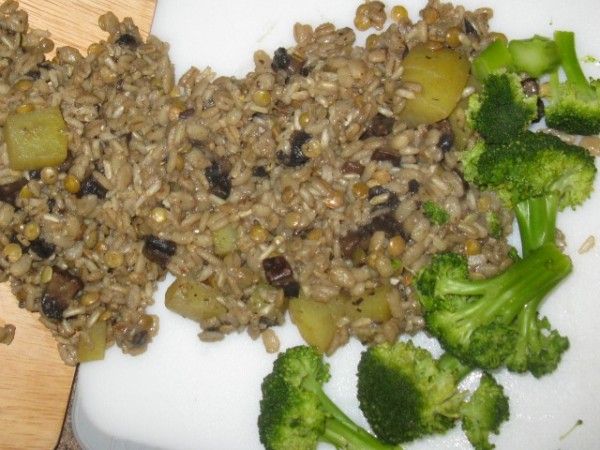Steep hillslopes with loose sediment are at risk from debris flows triggered by heavy rain or rapid snowmelt. As water is added to the hillslope, surface runoff or positive pore water pressure catastrophically destabilizes a portion of the slope. Pulled by gravity, the water and sediment mixture moves downslope – picking up trees, boulders, gravel, and more mud and water along the way. Usually nothing stops these flowing masses of debris until they reach a relatively flat surface.
Debris flows have the power to reshape mountainsides and valley bottoms, and they can cause tragic devastation to people and property in their way. From North Carolina and California to Japan and Brazil, debris flows are a significant natural hazard and an area of active research by geoscientists and engineers.
In the spirit of the Accretionary Wedge, I decided to undertake my own research and investigate the possibilities for an edible analog for debris flows. First, I assembled sediments of a range of sizes, shapes, and natural cohesions.

Loose sediments (clockwise from top right) of the onion, rice, lentil, potato, portabella, garlic, pepper, salt, coriander, ginger, and barley varieties.
Then I added water to saturate the mixture, and placed it on a slope. Voila, debris flow pilaf! From the view below, you can see a bunch of features of debris flows.
- At the top, there is the area of initial failure. In this case, it appears to be in the midst of a broccoli clear cut, where root strength had been weakened, reducing cohesion in the soils.
- The debris flow then moved downslope in a somewhat confined manner. Usually the flow will move down an existing channel on the slope, but sometimes debris flows have to start from scratch and may not leave much of an erosional impression.
- There is some evidence that the debris flow bulked up by lateral accumulation of material on its downslope track (i.e., places where sediment appears to accrete along the sides of the flow).
- At least one large boulder has been rafted along the top of the flow, thanks to the quirks of fluid mechanics in very viscous fluids.
- When the flow moved off the hillslope and onto the valley floor, the potential energy disappeared and the flow quickly stopped moving. Sometimes, debris flows will form a fan shape deposit at their front. But in our case, while there was some lateral spreading, it just stopped moving a short distance out onto the flat.
- At the flow front, there is a significant accumulation of woody debris. (Amazing that it has kept its leaves on!) This debris has either been rafted on the top of the flow or been pushed along ahead of it.
- There is a higher concentration of the coarsest grain sizes at the flow front. This sort of bouldery front is typical of debris flows where coarse material is available. You can see this better in the image below.
Of course, there are some limitations to using kitchen ingredients as analogs for debris flows. I highly encourage you to watch this classic USGS video on debris flows for its incredible footage of a whole range of debris flow materials and behaviors, all set to the most wonderful classical music. (Seriously, try the first 40 seconds of part 1 and see if you are not hooked.) Then, after you’ve watched the videos, I encourage you to use the comment section to make suggestions for improvements to the physical realism of future experiments with edible debris flows.
If that’s not enough debris flow video goodness to satisfy your appetite, check out these USGS videos of debris flows at their experimental flume in the Oregon Cascades. The recipe for barley pilaf with lentil confetti (or as it shall always be known in my mind: “debris flow pilaf”) came from Didi Evans’ Vegetarian Planet.





Comments (7)
Links (4)-
-
-
-
Pingback: AW#30: Hydrogeologically Correct Cake | Point Source
Pingback: Accretionary Wedge #30: the Bake Sale « The Accretionary Wedge
Pingback: Food?! Disaster?! | Wei-Li Liang NTU Weblog
Pingback: Edible debris flow « Watershed Hydrogeology Blog